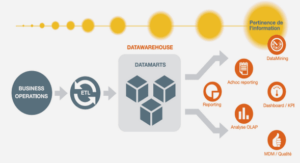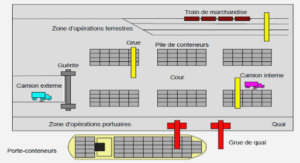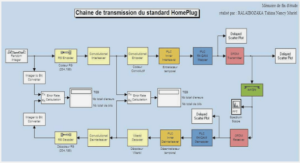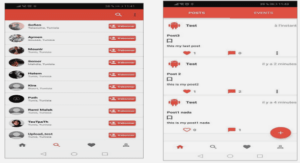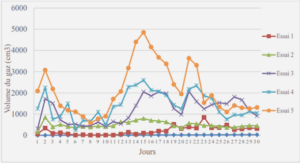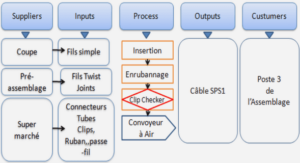Project and Project Management Definition
A project is a temporary endeavor undertaken to create a unique product, service, or result. The temporary nature of projects indicates a definite beginning and end (PMBOK Guide, 2008). Traditionally, only works in defense and construction industries were seen as projects; today, almost every activity in an organization can be viewed as a project with its unique characteristics and level of importance to the organization (Sean Maserang, 2002). Projects can differ in size, scope, cost and time. Sorne mega projects, such as Beijing Olympie Stadium, took millions of dollars and four years of ongoing construction; while sorne small projects, like house moving, took a few hundred and a whole afternoon. Besides, the subjects and forms of projects diversify. For example, the Royal couple’s visit to Canada in July, 2011 and the extension of new station on the orange line to Laval are typical projects. Meanwhile, the recent dis aster recovery in Quebec and U2 world tour in Montreal are counted too. Furthermore; the Montreal firework competition and the annual Montreal street c1eaning day project are good examples as weIl. Certainly, projects are various and not limited to the ones enumerated above. Project management is the application of knowledge, skills, tools and techniques to project activities to meet project requirements. It is accomplished through appropriate application and integration of 42 logically grouped project management processes compnsmg 5 Process Groups (PMBOK Guide, 2008), which are Initialing, PlaIll1ing, Executing, Monitoring and Controlling, and Closing. In general, the tasks of project management involve not only establishing the foundation for the project but also helping the plan, organization and control for it, thus maximizing the possibility of project success (Erling S Andersen, Kristoffer V Grude & Tor Haug, 2009). According to researchers Paul C. Dinsmore and Jeannette Cabanis-Brewin (2010), resource allocation is the critical success factor for the practice of project management compared with other factors like strategie planning, risks, etc. It has to make sure that the allocation of specifie resources is sufficient yet not overcommitted and that the right resources are assigned to right tasks at right time. Due to the number of activities that can be in simultaneous process and the limitation of resources, this is not easy to accomplish without the help of project management tools, especiaUy project management software. So the actual usage of these tools and the evaluation of their usefulness can provide great information for improvement.
Project Management Activities
According to PMBOK Guide (2008), the primary task of project management is to achieve aU setting goals while balancing competing project constraints inc1uding Scope, Quality, Schedule, Budget, Resources and Risk. It provides an organized and weUstructured way for the management of various independent, interdependent events and activities leading to a common result. These activities inc1ude (Civil Engineer, 2011):
• Analysis and design of objectives and events
• Work plan according to the objectives
• Risk assessment and control
• Resources estimation
• Resources assignrnent
• Work organization
• Human and material resources acquisition
• Tasks Assignment
• Activities direction
• Control of project execution
• Tracking and reporting progress
• Analyzing the results based on the facts achieved
• Defining the products of the project
• Forecast of future trends in the project
• Quality Management
• Defect prevention
• Project dosure
• Communication to stakeholders
Tools and Techniques in Project Management
Thomas Carlyle (1795-1881), a famous historian and author, has made a classic description for the relationship between tools and man, « Man is a tool-using animal. Without tools he is nothing, with tools he is ail. » Project management tools and techniques are enabling devices to help reach an objective or, to be more specifie, a project deliverable (Milosevié, 2003). Project management tools and techniques assist project managers and their team members in carrying out work in all nine knowledge fields that have been classified by the Project Management Institute. For example, the tools and techniques like Gantt charts, Project Network Diagrams and Critical Path Analysis are very popular and widely used in the domain oftime-management (Schwalbe, 2010). In particular, project management tools and techniques are fundamental elements for constructing a project management toolbox that helps to support standardized project managèment pro cesses (Milosevié, 2003). According to the investigations and conclusions of Kathy Schwalbe (2010), with the development of world economy and the evolution of business environment, the project management field has been turning more and more complex. It is in great need for people to develop and apply tools and techniques, especially facing the management of important projects.In order to maximize the effectiveness of project management tools and techniques, a careful and scientific selection is essential. The factors like the nature of the project, organization’s policy, project management strategy, availability of the resources,understanding of the tools and techniques, etc., should all be taken into consideration in the process of selection (Dey & Ogunlana, 2004).
Development of Project Management
In the light of Kerzner (2004), for almost 30 years, project management was regarded as a possibly good process to have instead of one that is critical for the survival of a company. Companies dared not invest heavily in project management, which was viewed as a latent threat to constructed hierarchies of authorities. The companies, which have reluctantly invested in sorne training courses, simply provided their staff with fundamental knowledge of project management regarding planning and scheduling. During the past three decades, excellence in project management was prevented from occurring. Little service was provided to empowerment, teamwork and trust since information control was regarded as power at that time. What’ s more, people held the faulty beliefthat time was luxury and sufficient rather than a constraint factor for companies. Kerzner (2004) found that by the mid-1990s, this mentality was challenged and shaken largely due to the two recessions. Great competitive pressure was laid upon companies to create required products in a shorter period of time. Businesses then felt obliged to change for the better. Today, businesses have succeeded in the change for the better and project management is not an entirely internaI system to the organization any more. Specifically, it is now a powerful weapon that guarantees higher levels of quality and increases value added to the customer (Kerzner, 2004). A more detailed understanding of the development of project management is necessary to see its trends and make projections.
|
Table des matières
ACKNOWLEDGMENT
RESUME
ABSTRACT
TABLE OF CONTENTS
LIST OF TABLES
LIST OF FIGURES
LIST OF ACRONYMS
CHAPTER 1 INTRODUCTION
CHAPTER 2 REVIEW OF LITERATURE
2.1. PROJECT MANAGEMENT THEORY
2.1.1. PROJECT AND PROJECT MANAGEMENT DEFINITION
2.1.2. PROJECT MANAGEMENT ACTIVITIES
2.1.3. PROJECT MANAGEMENT PROCESS
2.1.4. TOOLS AND TECHNIQUES IN PROJECT MANAGEMENT
2.2. DEVELOPMENT OF PROJECT MANAGEMENT
2.2.1. PROJECT MANAGEMENT GROWTH
2.2.1.1. PROJECT MANAGEMENT: 1945 -1960
2.2.1.2. PROJECT MANAGEMENT: 1960 – 1985
2.2.1.3. PROJECT MANAGEMENT: 1985 -2010
2 .2.2. THE EXPANSION OF PROJECT MANAGEMENT TOOLS AND TECHNIQUES
2.2.3. PMl’s PROJECT MANAGEMENT BODY OF KNOWLEDGE, 1968 – 2008
2.3. USE OF TOOLS AND TECHNIQUES IN DIFFERENT COUNTRIES
2.3.1. NORTH AMERICA
2.3.2. EUROPE & AUSTRALIA
2.3.3. AFRICA
2.4. PROJECT MANAGEMENT IN CHINA
2.4.1. HISTORY OF PROJECT MANAGEMENT IN CHINA
2.4.2. CHARACTERISTICS OF PROJECT MANAGEMENT IN CHINA
2.4.3. USAGE OF TOOLS AND TECHNIQUES IN CHINA
2.5. SUMMARY OF THE LITERATURE REVIEW
CHAPITER 3 RESEARCH CONCEPTION
3.1. PROBLEMS OF THE RESEARCH FORMULATION
3.2. RESEARCH OBJECTIVES
3.3. RESEARCH QUESTION AND PROPOSITION
3.3.1. RESEARCH QUESTIONS
3.3.2. RESEARCH PROPOSITIONS
3.4. REFERENCE FRAME
CHAPITER 4 REASEARCH METHODOLOGY
4.1. RESEARCH METHOD
4.2. RESEARCH SETTING AND SAMPLlNG SELECTlON
4.3. DATA COLLECTION
4.4. DATA ANALYSIS
CHAPITER 5 PRESENTATION AND ANALYSIS OF THE RESULTS
5.1. USAGE OF PROJECT MANAGEMENT TOOLS AND TECHNIQUES IN CHINA
5.1.1. GENERAL SITUATION OF USAGE
5.1.1.1. THE USAGE OF COMPUTERIZED PROJECT MANAGEMENT TOOLS AND TECHNIQUES
5.1.2. POTENTIALlTY OF PROJECT MANAGEMENT TOOLS AND TECHNIQUES
5.2. RELATIONSHIPS AMONG VARIABLES
5.3. USAGE OF PROJECT MANAGEMENT TOOLS AND TECHNIQUES IN DIFFERENT CONTEXT
5.3.1. ORGANIZATIONAL MATURITY
5.3.2. PROJECT SIZE
5.4. USAGE OF PROJECT MANAGEMENT TOOLS AND TECHNIQUES IN PROJECTS OF DIFFERENT CHARACTERISTICS
5.4.1. PROJECT TyPES
5.4.2. PROJECT PHASES
5.5. USAGE OF PROJECT MANAGEMENT TOOLS AND TECHNIQUES FOR PROJECT MANAGERS OF DIFFERENT EXPERIENCE
5.5.1. EDUCATION LEVEL
5.5.2. WORK EXPERIENCE
5.6.COMPARISON
CHAPITER 6 DISCUSSIONS
6.1. RESEARCH RESULT
6.2. FORCES AND LIMITS OF STUDY
6.3. RECOMMENDATION
6.3.1. PROJECT MANAGEMENT TOOLS TRAINING COURSE
6.3.2. ORGANIZATIONAL SUPPORT
CHAPITER 7 CONCLUSION
REFERENCES
APPENDICES
![]() Télécharger le rapport complet
Télécharger le rapport complet

